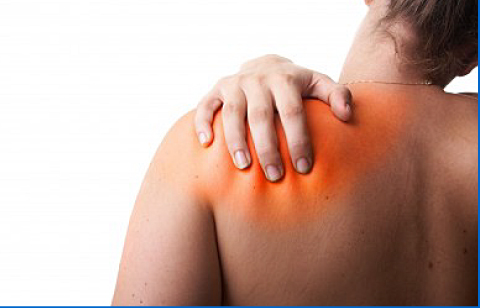Shoulder
The shoulder is a very sophisticated and complicated part of the body. It is made up of mainly two joints:
• Shoulder Joint: It is a ball and socket joint. The ball is the head of the upper arm bone (humeral head), and the socket is a small saucer-shaped part of the shoulder blade called Glenoid. There are four tendons of the shoulder forming a ‘cuff’ around the humeral head, known as the “Rotator Cuff”.
• The acromio-clavicular joint (ACJ): It is a joint at the top of the shoulder. It is the junction between the acromion (part of the shoulder blade that forms the highest point of the shoulder) and the clavicle (collar bone).
Both joints are stabilised by a complex of capsule and ligaments.
The shoulder (like most of joints in the body) is subject to injury and degenerative (wear & tear) processes. Patients would usually present with one or a combination of any of the following symptoms;
1. Pain
2. Stiffness (lack or reduced movements)
3. Instability (i.e. repeated dislocations (popping out) of the joint)
4. Reduce function (deterioration of the use of the shoulder/arm)
Here below are some of the common conditions/problems affecting the shoulder:
Shoulder Impingement Syndrome
It is a very common shoulder problem. The pain is usually felt on the side of the upper arm (deltoid area) and worsened when the arm is lifted above the head level or during night sleep.
It can be successfully treated with Arthroscopic (keyhole) operation as a Day-Surgery case. More...
Calcific Tendinitis
This shoulder problem features with sever pain on the side of upper arm (deltoid area) and reduce shoulder movement. X-ray may reveal some calcium deposits in the shoulder. It can be successfully treated with Arthroscopic (keyhole) operation as a Day-Surgery case. More...
Rotator Cuff Tear
The tendons in the shoulder can be damaged either by trauma (sport injury, accident) or Wear & Tear. The patient complains of pain on the side of the upper arm (deltoid area) as well as weakness in the shoulder. It is recommended for the sufferer to undergo a surgical repair of the torn tendon(s) using Arthroscopic (keyhole) operation as a Day-Surgery case. More...
Frozen Shoulder
Frozen shoulder is an extremely painful condition associated with substantial or even total loss of the movement of the shoulder (the shoulder “freezes up”). It is common among diabetic people. Treatments are available for this condition with variable degree of success including Arthroscopic (keyhole) release operation as a Day-Surgery case. More...
Shoulder Dislocation
The shoulder joint can be initially dislocated (popped out) as a result of a trauma (sport injury, accident). This may leave the patient with an ongoing pain and sense of insecurity in his/her shoulder during movement. It may subject the patient to repeated dislocations and long term damage if ignored. Most of the cases are successfully treated with Arthroscopic (keyhole) operation as a Day-Surgery. More...
Shoulder Arthritis
The common features of Shoulder Arthritis are painful movement, stiffness and a feeling of grinding or catching within the joint, as well as night sleep disturbance. There are a variety of treatments for it including operative methods like Shoulder Joint Replacement. More...
Acromio-Clavicular Joint (ACJ)
This joint is located at the end of the collarbone (clavicle) which joins the acromion portion of the shoulder blade (scapula). Just like any other joint, it can be affected by various types of injuries and other diseases. Some of them can be treated with Arthroscopic (keyhole) operation as a Day-Surgery. More...
Biceps Conditions
This is the muscle in the front of the upper arm. It is a common site for injury as a result of sport and work accidents. It causes some pain as well as weakness in bending the elbow against resistance (like lift a chair). It is recommended for the patient to seek medical advice from the expert as the majority of these cases are treatable with surgical repair within days after the injury. More...
Shoulder Fracture
Fractures of the shoulder bones usually occur as a result of an impact injury, such as a fall or blow to the shoulder. When suspected, it is strongly advisable for the patient to attend the nearest Causality Department for emergency assessment and treatment. More... |



